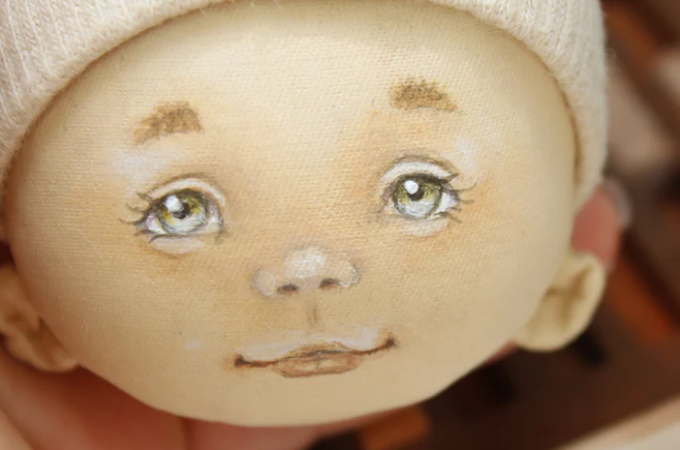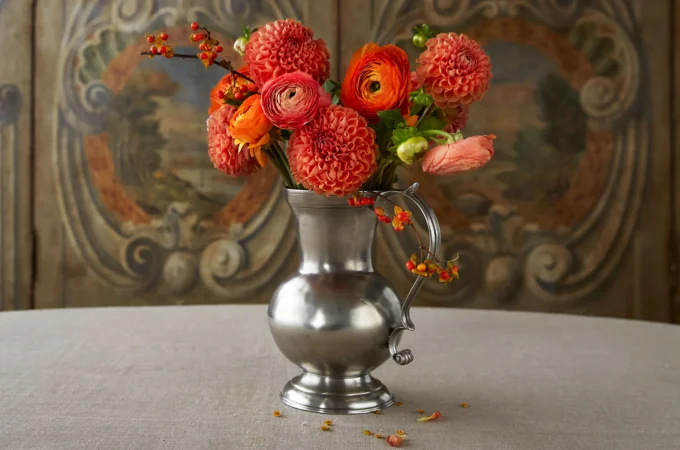
Exploring Christian Art Trends in the US
In the world of contemporary art, Christian expressions stand out as a testament to faith, creativity, and cultural dialogue. From the revival of traditional iconography to the exploration of diverse perspectives and mediums, Christian art trends in the US are a vibrant reflection of the intersection between faith and artistic innovation. Artists are infusing their works with symbolism, allegory, and social commentary, inviting viewers into deeper contemplation and engagement with timeless truths. Through their creativity and commitment to social impact, Christian artists are not only enriching the artistic landscape but also embodying the transformative power of art to inspire change and foster unity in a divided world.
Renaissance of Religious Iconography: Contemporary Interpretations of Traditional Themes
In the latest events of Christian art in the US, there’s been a noticeable resurgence of interest in traditional religious iconography, albeit reimagined through a contemporary lens. Artists are drawing inspiration from the rich tapestry of biblical narratives, saints’ stories, and theological concepts to create compelling works that resonate with audiences both spiritually and aesthetically. For instance, contemporary painters like Makoto Fujimura infuse their canvases with intricate symbolism and layered meanings, echoing the techniques of Renaissance masters while exploring themes of grace, redemption, and divine beauty. This revival of religious iconography isn’t confined to painting alone; sculptors, photographers, and even digital artists are also contributing to the movement, using their respective mediums to explore the intersection of faith and art in innovative ways.
Contemporary interpretations of traditional religious themes often serve as catalysts for spiritual reflection and contemplation. Just as Renaissance artists used their works to inspire devotion and piety, today’s artists are tapping into the timeless truths of scripture and tradition to engage viewers on a deeper level. For example, Bruce Herman’s “Crucifixion” series offers a poignant meditation on the suffering and sacrifice of Christ, inviting viewers to enter into the mystery of redemption and encounter the transformative power of the Cross. Through these contemporary reimaginings of traditional themes, artists are breathing new life into age-old narratives, inviting audiences to see familiar stories with fresh eyes and encounter the eternal truths of the Christian faith.

Symbolism and Allegory: Exploring Layers of Meaning in Christian Art
Symbolism and allegory have long been integral components of Christian art, serving as vehicles for conveying complex theological concepts and spiritual truths in visual form. Artists in the US are harnessing the power of symbols and allegorical imagery to create works that resonate deeply with viewers, inviting them to explore layers of meaning and significance beyond the surface. For instance, the use of light and darkness in works by contemporary artists like Anneke Kaai evokes the biblical theme of spiritual enlightenment and the struggle between good and evil, inviting viewers to contemplate the battle between sin and salvation. Similarly, the inclusion of symbolic objects like the lamb or the dove in works by artists such as Daniel Bonnell serves as visual metaphors for themes of innocence, purity, and peace, drawing viewers into deeper reflections on the divine mysteries of faith.
Symbolism and allegory in Christian art often serve as bridges between the temporal and the eternal, the visible and the invisible. Just as Jesus used parables to convey spiritual truths to his disciples, artists use symbols and allegorical imagery to speak to the soul and provoke contemplation. For example, the use of the “Alpha and Omega” symbol in works by contemporary artist Albrecht Behmel serves as a reminder of Christ’s eternal sovereignty and the promise of his return, inviting viewers to consider their own place within the grand narrative of God’s redemptive plan. Through symbolism and allegory, artists create visual language that transcends linguistic barriers and speaks to the universal human experience, inviting viewers into a deeper encounter with the mysteries of faith.

Diversity and Representation: Embracing Multicultural Perspectives in Christian Art
Christian art in the US is undergoing a transformation, as artists from diverse cultural backgrounds bring their unique perspectives and experiences to bear on traditional themes and narratives. This shift towards multicultural representation reflects a broader movement towards inclusivity and diversity in the arts, as artists seek to challenge dominant narratives and amplify marginalized voices. For example, African American artists like Kehinde Wiley and Amy Sherald are reimagining traditional religious iconography through the lens of Black identity and culture, infusing their works with themes of social justice, liberation theology, and the Black experience. Similarly, Latinx artists like Emanuel Martinez and Alma Lopez are incorporating elements of their cultural heritage into their art, exploring themes of immigration, identity, and spirituality through vibrant colors and symbolic imagery.
The embrace of multicultural perspectives in Christian art serves as a powerful reminder of the universal message of love and redemption at the heart of the Gospel. Just as Jesus welcomed all who came to him regardless of their social status or background, so too does Christian art reflect the diversity and richness of God’s creation. For example, the works of contemporary artist He Qi blend elements of traditional Chinese art with Christian iconography, creating visually stunning pieces that speak to the universal themes of faith, hope and pain. Through their art, these diverse voices contribute to a more inclusive and expansive understanding of the Christian faith, inviting viewers to see themselves reflected in the sacred stories and symbols that have shaped the lives of believers for centuries.
Contemporary Expressions of Faith: Exploring Non-Traditional Mediums and Styles
Contemporary Christian art in the US is characterized by a spirit of experimentation and innovation, as artists explore non-traditional mediums and styles to express their faith in fresh and unexpected ways. From mixed media installations to digital art and street murals, these contemporary expressions of faith push the boundaries of what constitutes “Christian art” while remaining grounded in the timeless truths of the Gospel. For example, the works of contemporary artist Sadao Watanabe combine traditional Japanese paper-cutting techniques with Christian imagery, creating visually striking pieces that bridge the gap between East and West, ancient and modern. Similarly, street artists like Banksy and Shepard Fairey use their art to engage with contemporary issues and concerns through the lens of faith, creating provocative works that challenge viewers to reexamine their assumptions and beliefs.
Contemporary expressions of faith often reflect the realities of life in the 21st century, addressing themes of doubt, struggle, and resilience in the face of adversity. For example, the works of contemporary artist Scott Erickson explore the tension between faith and doubt, wrestling with questions of belief and belonging in a world marked by uncertainty and upheaval. Through their art, these contemporary artists create spaces for dialogue and reflection, inviting viewers to wrestle with the complexities of faith and spirituality in an increasingly secular age. By embracing new mediums and styles, artists are able to reach broader audiences and engage with contemporary issues and concerns in meaningful and relevant ways, bridging the gap between the sacred and the secular and inviting viewers into deeper encounters with the divine.

Community Engagement and Social Impact: Harnessing the Power of Art for Good
Christian artists in the US are increasingly using their creative talents to address social issues and effect positive change in their communities. Through public art projects, community murals, and collaborative initiatives, these artists are harnessing the power of art to inspire dialogue, foster empathy, and promote social justice and reconciliation. For example, the “Voices” project by artist Julie Lonneman brings together survivors of gun violence to create powerful works of art that bear witness to the human cost of gun violence and advocate for change. Similarly, the “Migrant Quilt Project” by artist Jody Ipsen uses quilting as a medium for storytelling, sharing the stories of migrants who have lost their lives while seeking a better future in the US.
Community engagement and social impact are integral components of the Christian faith, which calls believers to love their neighbors as themselves and work for the flourishing of all. For example, the “Water Works” project by artist Janet McKenzie raises awareness about the global water crisis and supports clean water initiatives in developing countries through the sale of art prints and merchandise. By engaging with local communities and addressing pressing social concerns, Christian artists are fulfilling the prophetic role of art as a catalyst for transformation and healing, bringing light and hope to dark and broken places. Through their creative endeavors, these artists embody the transformative power of art to inspire change, challenge injustice, and build bridges of solidarity and compassion across lines of difference.
For conclusion, the landscape of Christian art in the US is marked by a vibrant tapestry of creativity, diversity, and social engagement. From the resurgence of traditional religious iconography to the embrace of multicultural perspectives and the exploration of contemporary mediums and styles, artists are reimagining the rich heritage of Christian faith in ways that speak to the complexities of our modern world. Through their art, these visionaries invite viewers to journey deeper into the mysteries of faith, to wrestle with the complexities of belief, and to engage with the pressing social issues of our time. As they harness the power of art to inspire dialogue, foster empathy, and promote social justice and reconciliation, Christian artists are fulfilling the prophetic role of art as a catalyst for transformation and healing. In the midst of uncertainty and upheaval, their works serve as beacons of light and hope, reminding us of the enduring truths of the Gospel and the universal call to love our neighbors as ourselves.




